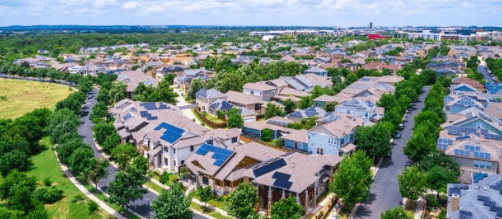“Powering the Future: The Rise of Virtual Power Plants in America”

The United States is witnessing a surge in demand Virtual Power Plants for electricity, a trend not seen in decades. The proliferation of sprawling data centers, necessary to sustain our hyperconnected digital lifestyles and support emerging AI systems, along with the increasing adoption of electric vehicles and the shift towards electric heating systems and appliances, are driving this heightened need for power.
READ: New York Businesses Ordered to Require Masks Indoors or Vaccine Proof
Virtual Power Plants
Analysts predict that these trends will lead to a significant spike in U.S. power demand in the years to come. However, the nation’s expansion of clean energy infrastructure is not keeping pace with this power-hungry future in a sustainable manner.
Fortunately, one solution already within reach is the virtual power plant (VPP). A VPP comprises a network of small-scale distributed energy sources, such as solar-plus-battery systems, smart thermostats, or electric vehicles, remotely controlled using software to help balance the main electrical grid, akin to a traditional power plant.
During this year’s South by Southwest festival, a panel discussion on the pressing need for VPPs was led by Arshad Mansoor and Rudy Garza, esteemed experts in the field. Mansoor, President and CEO of the nonprofit Electric Power Research Institute, emphasized the urgent need for VPP deployment nationwide, in collaboration with the U.S. Department of Energy. Meanwhile, Garza, President and CEO of CPS Energy in San Antonio, highlighted the utility’s decade-long efforts in VPP development.
Several key insights emerged from the discussion:
Leveraging Small Systems for Grid Needs: A significant portion of existing U.S. grid capacity is designed for intermittent use, typically during periods of high demand. As renewable energy projects and electric vehicle adoption increase, additional peak capacity is required to maintain grid reliability. VPPs, with their ability to aggregate distributed resources, offer a scalable solution to address this need.
Enhancing Climate Resilience: VPPs can play a crucial role in enhancing communities’ resilience to extreme weather events. CPS Energy’s demand-response program in San Antonio illustrates how VPPs can help manage electricity demand during heatwaves, mitigating the risk of blackouts and ensuring grid stability.
Benefits for Low-Income Households: VPP deployment can contribute to reducing energy costs across the grid, benefiting low- and moderate-income households disproportionately burdened by utility bills. By providing financial incentives and rebates for participation in VPP programs, households can access cost savings while supporting grid reliability.
Challenges and Opportunities: Despite the potential benefits of VPPs, deployment faces challenges such as interoperability issues and structural barriers in low-income communities. Addressing these challenges requires collaborative efforts between utilities, regulators, and consumers to ensure a seamless transition to a more decentralized and resilient grid.
Overall, VPPs represent a critical component of the evolving energy landscape, offering a pathway towards a more sustainable, reliable, and equitable electricity system. As the U.S. grapples with the complexities of energy transition, VPPs offer a promising solution to meet the nation’s growing power needs while advancing climate goals and supporting vulnerable communities.




